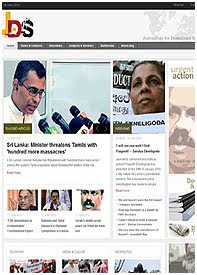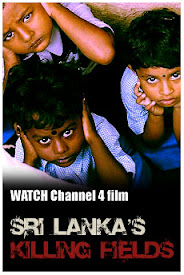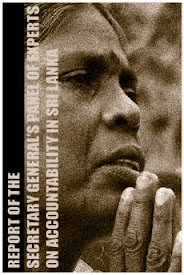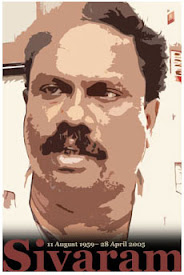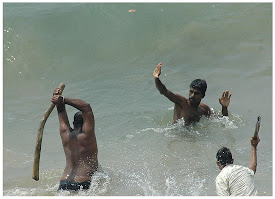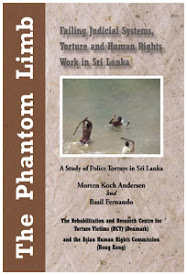
By Rohan Abeywardena | The Island
.............................................................................................................................................................................................
Authoritative energy sector sources said the crucial agreement was now tentatively scheduled to be signed on Sept. 06. During their three-day stay the top level Indian delegation is also scheduled to visit the site of the proposed plant at Sampoor.
Despite the Rajapaksa administration taking the bold decision to go ahead with coal power plants to meet Sri Lanka’s growing power demand disregarding protests from certain vociferous sections, the negotiations to clinch the joint venture between the National Thermal Power Corporation of India (NTPC) and the Ceylon Electricity Board dragged on since the signing of the initial memorandum of understanding in December 2006 till finally Power and Energy Ministry Secretary M. M. C. Ferdinando early this month initiated its all-important Implementation Agreement in New Delhi with his counterparts there.
According to sources, out of at least five different agreements pertaining to the 500 MW first phase of the project running to hundreds of pages had been held up since they were finalised more than a year ago, over some terms.
Officials are tight-lipped as to what really caused such a long delay while the country, grappling with serious power shortages, was forced to turn to costly thermal power in the interim to meet the shortfall.
The Island learns that the greater part of the delay was due to the Attorney General’s Department going through all terms with a fine-tooth comb, probably because of the harm that had befallen the country owing to the blind signing by the Ceylon Petroleum Corporation (CPC) of Hedging Deal.
But, CEB officials simply explained it as being due to differences over technical and legal jargon.
The previous regimes of Chandrika Kumaratunga and Ranil Wickremesinghe made matters worse for the country by simply cancelling all previous plans to build coal power plants fearing protests by vested interests.
CEB sources said yesterday immediately after the joint venture agreement with NTPC for the US$ 500 million project was signed early next month, the joint venture company would be incorporated within a week and that company would sign the balance agreements with the relevant parties.
Under the proposed agreement, the NTPC and the CEB each will invest US $ 75 mn as equity capital, while the balance US $ 350 mn would be raised from banks as loan capital.
Although the original target date to commission the plant was in 2016, sources said due to the unexpected delays in finalising the deal it was now expected to be completed in about 2017.
They, however, said there was a slight brighter side to the delay as costs of building coal power plants had since come down slightly and the local plant might now cost anything between US $ 450 mn and US $ 475 mn.
Among the other agreements involved in this deal, The Island learns, are the 500-acre land lease, coal supply pact with Lanka Coal Supply Co, Ltd., power purchase agreement, the BOI status deal, which will assure it, among other things, a 25-year tax holiday and the loan agreement with the funding banks.
CEB sources said negotiations with the lending bodies had already commenced unofficially and once the agreements were signed clinching bank finances would not be a problem
The CEB has already acquired and secured the necessary 500 acres for the project, bulk of which came from state lands in the region, while the balance requirement lying mainly in the periphery is in the process of being acquired from private owners. It is also in the process of getting the other necessary infrastructure in place like building a jetty to unload coal, doing up access roads to the site and the building of the new connecting power lines from the project to the national grid via Habarana.
© The Island
Wednesday, August 31, 2011
Sri Lanka - India to sign Sampoor power plant agreement in September
Wednesday, August 31, 2011
In Sri Lanka, a 'negative peace' prevails

Photo courtesy: Steve Chao /Al Jazeera
By Kate Mayberry | Al Jazeera
.............................................................................................................................................................................................
"There wasn't anybody there, not a drop of water. I was just lying there in the sun," he said as he recalled the final days of the fighting between the Liberation Tigers of Tamil Eelam (LTTE) and the Sri Lankan military. "Then I heard voices and, 200m away, saw soldiers advancing. They took me away."
More than 11,000 people were detained by the Sri Lankan authorities at the end of the war on suspicion of being members of the Tamil Tigers, who fought a 26-year battle for an independent Tamil homeland. Some gave themselves up, but no detainees have access to lawyers and few are charged, their families left to find out for themselves the location of their loved ones. More than two-thirds have now been released, but amid a pervasive military presence many struggle to resume a normal life.
"A sense of impunity and that the worst can happen is still prevalent," said Jehan Perera, Executive Director of the National Peace Council in the Sri Lankan capital, Colombo. "There's been no break with the past."
Mano spent nearly a year in a government-run rehabilitation camp and has been living with his family in the northern town of Vavuniya since his release in April 2010. The rehabilitation programme includes psychological counselling as well as skills training. Although some former LTTE members have found good jobs in government-run reconstruction projects, many find it hard to get regular work. Mano occasionally works in a shop but relies mainly on his family for support.
With a continuous military presence in the former conflict zone, few are prepared to risk association with former LTTE members, and LTTE families don't advertise their past. There are numerous bases along the A9 road north to Jaffna and smaller camps spread among civilian villages across the Vanni. Military approval is required for large gatherings, and soldiers will often enquire about smaller meetings. Few of those interviewed for this story wanted to reveal their identities and would meet only at a "safe" house.
Markandu Arulananthan is an exception. He's been displaced numerous times in the course of the Sri Lankan conflict and now lives with his wife, daughter and two sons in a rented house in Jaffna. But his eldest son, Ayengaran, who was taken by the Tigers in 2002, is missing and Arulananthan's search for him has yielded little but a growing record of his fruitless search.
He's alerted the ICRC and the Human Rights Commission, visited known detention centres, army camps and police stations, noting diligently the details of every meeting in a small Red Cross notebook. Arulananthan is convinced Ayengaran is still alive but the search and the uncertainty has exhausted him, and his family.
No safety in peace
Having lost a son and her husband - both members of the Tigers - to the fighting and with another son in detention, Mathi is searching desperately for her remaining son who went missing in the final stages of the conflict.
It happened in Mullivaikal, a village squeezed onto a narrow spit of sand between the Nandikadal lagoon and the Indian Ocean on the island's northeastern coast, a place declared a civilian "safe zone" by the government. As the Sri Lankan army advanced, the coconut husks and palmyra leaves littering the ground caught fire. It was in what Mathi describes as an "inferno" and under almost constant bombardment, that her son disappeared. Like Arulananthan, she has kept a file of her increasingly desperate search.
"It's important that we should be told where he is," Mathi said. "Whether he's injured or whether he's dead he would ultimately be with the military because there was nobody else there. They must know."
But even those who've found their family members still struggle. Few can afford the cost of travelling to detention centres for visits or the costs of legal advice. In their desperation, some find themselves cheated.
Vidhya (pseudonym) lives with her sister and brother-in-law in the village where she was born. Her family and her lawyer are the only ones who know that her husband was a Sea Tiger and surrendered to the army at the end of the war.
It took Vidhya two months to find out where he was but she's now heavily in debt, having borrowed 500,000 rupees and pawned her sister's jewellery to pay people who convinced her they could get her husband freed. The jewellery will be forfeited if Vidhya, who has no income, doesn't pay by the end of this month.
"Without him, I don't have anyone to talk to, anyone to share my problems with," she says. Her four-year-old son, sitting on her lap, gently wipes the tears from her face as she speaks.
"People say we have peace but the peace we have is a negative peace - the absence of war and violence," said Perera. "We don't have a peace where there's reconciliation and trust. That's what we need to work towards."
The Tamil National Alliance, which swept recent local elections in the Northeast, has asked the government to release the names of all those in custody and their place of detention, but it has yet to do so.
In some ways, Mano's family was lucky. Their son was returned to them.
© Al Jazeera
This site is best viewed with firefox

Search
Is this evidence of 'war crimes' in Sri Lanka?
Archive
- ► 2010 (1312)
- ▼ 2011 (687)
Links
- Reporters Sans Frontières
- Media Legal Defence Initiative
- International Press Institute
- International News Safety Institute
- International Media Support
- International Freedom of Expression eXchange
- International Federation of Journalists
- Committee to Protect Journalists
- Asian Human Rights Commission
- Amnesty International
